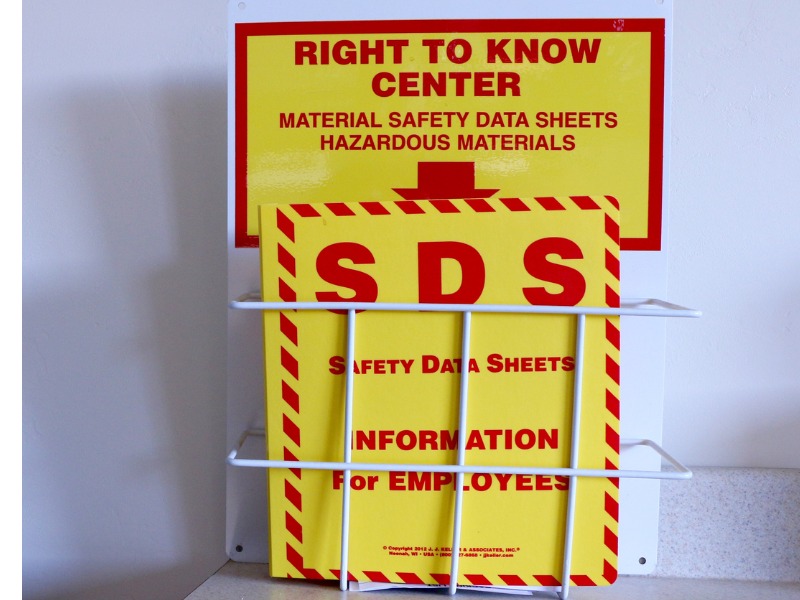Everything About Safety Data Sheet (SDS)
A safety data sheet, often known as an SDS, is a standardized document that contains information about workplace safety and health. SDSs (Safety Data Sheets) are documents that include helpful information on chemicals, including a description of the hazards they pose, as well as instructions for handling, storage, and emergency procedures in the event of an accident. Additional information on safe handling, such as exposure scenarios, may be included in SDSs.
The International Danger Communication Standard (HCS) requires chemical companies to give a Safety Data Sheet to chemical handlers in order to communicate the chemical’s hazard information. SDSs frequently include chemical properties, health and environmental hazards, preventive measures, and safety procedures for storing, handling, and transporting chemicals. To enhance your knowledge about Safety Data Sheet (SDS), enroll yourselves in OSHA 10-Hour General Industry and OSHA 30-Hour General Industry online training courses to become aware of all aspects of site safety topics and potential site hazards that are often unpredictable.
SAFETY DATA SHEET SECTIONS
There are sixteen sections on safety data sheets. The first eight parts focus on providing quick access to critical information that may be needed by chemical handlers for safe handling procedures or by emergency responders. Data about reactivity, stability and physical and chemical properties may be found in sections 9-11. Sections 12 to 15 are voluntary but must be completed to ensure that all aspects are completely compliant. The SDS’s final section contains details about the SDS, such as the revision date and modifications since the previous model.
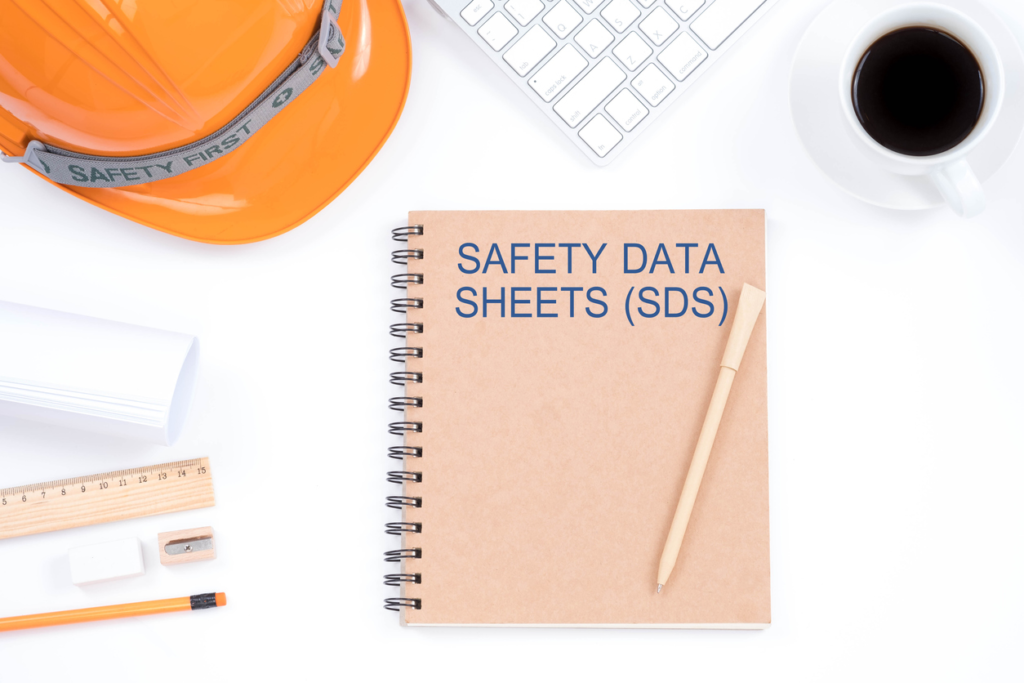
Employers must ensure that employees have access to safety data sheets for any hazardous chemicals with which they work. Employers can address this issue in a number of different ways. Workers must have access to the safety data sheets for all of the compounds with which they are working. If the employer doesn’t have an SDS for one of these chemicals, they should ask the supplier for the most recent version. Online SDS databases provide a unique advantage over binder-based systems in this regard, because the database provider is often in charge of indexing and maintaining the safety data sheets.
Identification of the mixture Safety Data Sheet
The chemicals and their recommended applications are listed in the first section of the Safety Data Sheet. It also provides the contact information for the provider. Having appropriate training will enable you to become well-equipped with the following information:
- The chemical’s product identifier as well as any additional common names are all listed on the package.
- Name, address, and phone number of the manufacturer, importer, or other responsible parties, as well as an emergency phone number.
- The chemical’s suggested use (along with a quick summary of what it accomplishes) and any prohibitions.
Safety Data Sheet Hazards identification
The second section goes into the chemical’s dangers as well as the possible side effects and symptoms of its use. This will aid in the assessment of health risks, worker health, and environmental dangers. All hazardous compounds and mixtures must be classified and labeled, according to the CLP Regulation. As a result, pictograms, the signal word, hazard, and precautionary comments must all be included in the section. The information in this area must match the information on the label.
- The hazard classification of the chemical.
- Signal word.
- Hazard statement(s).
- Pictograms.
- Precautionary statement(s).
- Description of any hazard not otherwise classified.
- For a mixture that contains an ingredient(s) with unknown toxicity, a statement describing how much (percentage) of the mixture consists of ingredient(s) with unknown toxicity. Note that this is a total percentage of the mixture and is not tied to the individual ingredient(s).
Composition/information on ingredients
Individual chemicals in a mixture are identified, their dangers are described, and their concentration is given in this section. In the case of a substance’s Safety Data Sheet (SDS), this part specifies the substance’s identification. A statement indicating the exact chemical identity and/or percentage (concentration) of the composition has been kept as a trade secret is necessary.
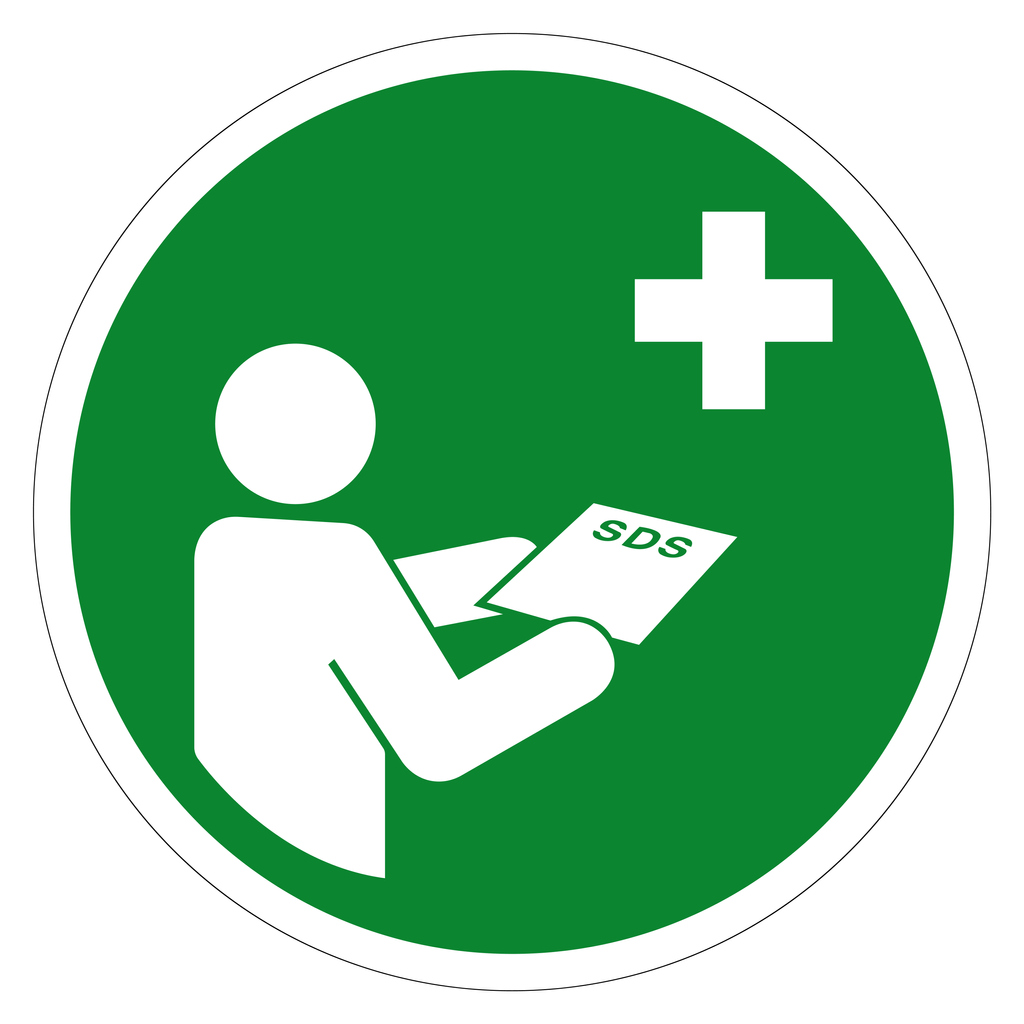
Safety Data Sheet First aid measures
Section 4 describes how untrained responders should react to someone who has been exposed to the poison. the following is needed in this area:
- Instructions for necessary first-aid by appropriate modes of exposure (inhalation, skin and eye contact, and ingestion).
- Describe the most important symptoms or effects, as well as any acute or delayed signs.
- Recommendations for quick medical attention and, appropriate treatment if necessary.
Fire-fighting measures (SDS)
The fifth section covers how to battle a chemical-caused fire, including the best extinguishing media and personal protection equipment.
- Information on approved extinguishing equipment, as well as suitable extinguishing equipment for a particular circumstance.
- Advice on specific threats that arise from the chemical during a fire, such as any toxic byproducts that result from the chemical’s combustion.
- Special protective equipment or practices are suggested for firefighters.
Accidental release measures (SDS)
Section 6 offers advice on how to respond to spills, leaks, or releases, including containment and cleanup procedures to avoid or reduce exposure to people, property, and the environment. It may also include guidelines discriminating between remedies for large and small spills with a substantial impact on the danger. This section must include the following information:
To avoid contamination of skin, eyes, and/or clothing, take personal precautions (such as removing ignition sources or providing adequate ventilation) and wear protective equipment.
- Instructions for evacuations, expert consultation when needed, and suitable protective apparel are all part of the emergency protocols.
- Containment techniques and materials (e.g., cover drains and capping procedures).
Procedures for confinement and cleanup (e.g., proper neutralizing techniques, decontamination, cleaning or vacuuming, adsorbent materials, and/or containment/clean-up equipment).
Handling and storage (SDS)
Section 7 emphasizes proper handling techniques and storage conditions. The following information is required in this section:
- Precautions for safe handling, include instructions for managing incompatible substances, minimizing environmental discharge, and offering general hygiene advice (e.g., eating, drinking, and smoking in work areas prohibited).
- Recommendations for safe storage conditions, including any incompatibilities. Assist with specialized storage requirements (e.g., ventilation).
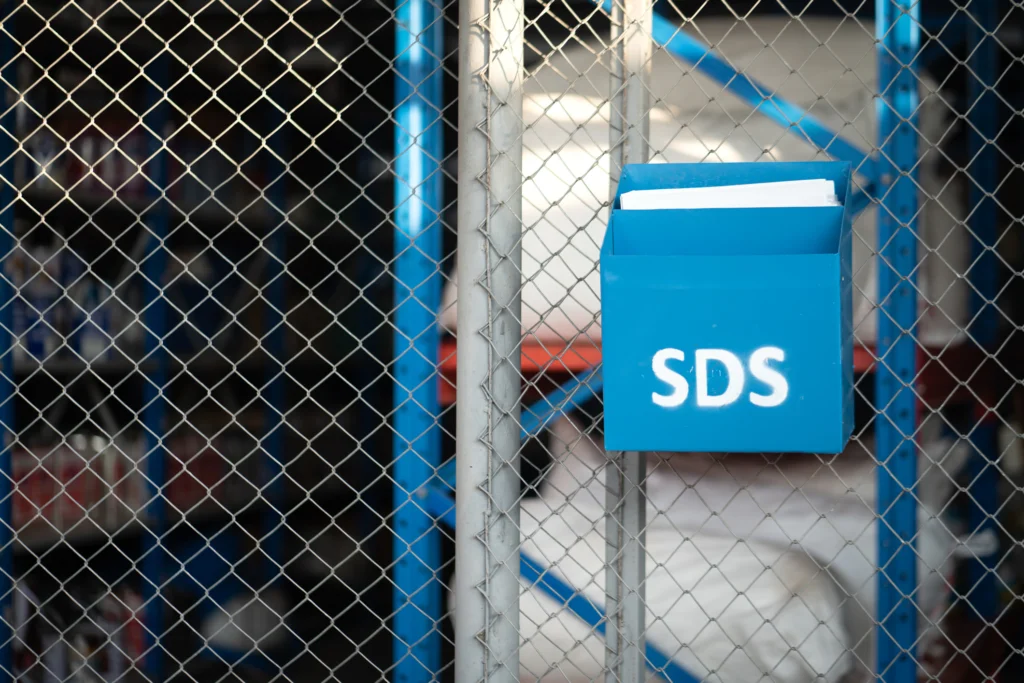
Exposure controls/personal protection
Exposure limits, engineering controls, and personal protective measures are all listed in Section 8 to help reduce exposures.
- Engineering controls that are appropriate (i.e., use local exhaust ventilation, or use only in a closed system).
- Use personal protective equipment to protect yourself from sickness or damage resulting from exposure (e.g., eye, face, skin, or respiratory protection needed).
- Any particular PPE, or respiratory protection requirements (e.g., type of glove material and breakthrough time of the glove material).
Physical and chemical properties
The physical and chemical parameters of the material or mixture are listed in Section 9. Because information may not be relevant or available, the safety data sheet (SDS) may not contain every item on the above list. When this occurs, a notation to that effect must be written for that chemical characteristic. Also essential are things like the dust deflagration index, which measures the rate of combustion for flammable dust.
Stability and reactivity
Section 10 describes the reactivity hazards of the chemical and chemical stability. This section is divided into three subsections; reactivity, chemical stability, and other. The following part of the section emphasizes the indication of the possibility of hazardous reactions, including a statement of whether the chemical will react of polymerizing, which could release excess pressure of heat, or create other hazardous conditions.
Toxicological information
Section 11 contains or indicates whether or not toxicological and health consequences information is available. Information on the most likely exposure pathways (inhalation, ingestion, skin, and eye contact). If the information is unknown, the safety data sheet SDS should state so. The percentage of test animals projected to die in a single dose is based on numerical metrics of toxicity. This report contains symptoms related to chemical exposure, ranging from the mildest to the most severe exposures.
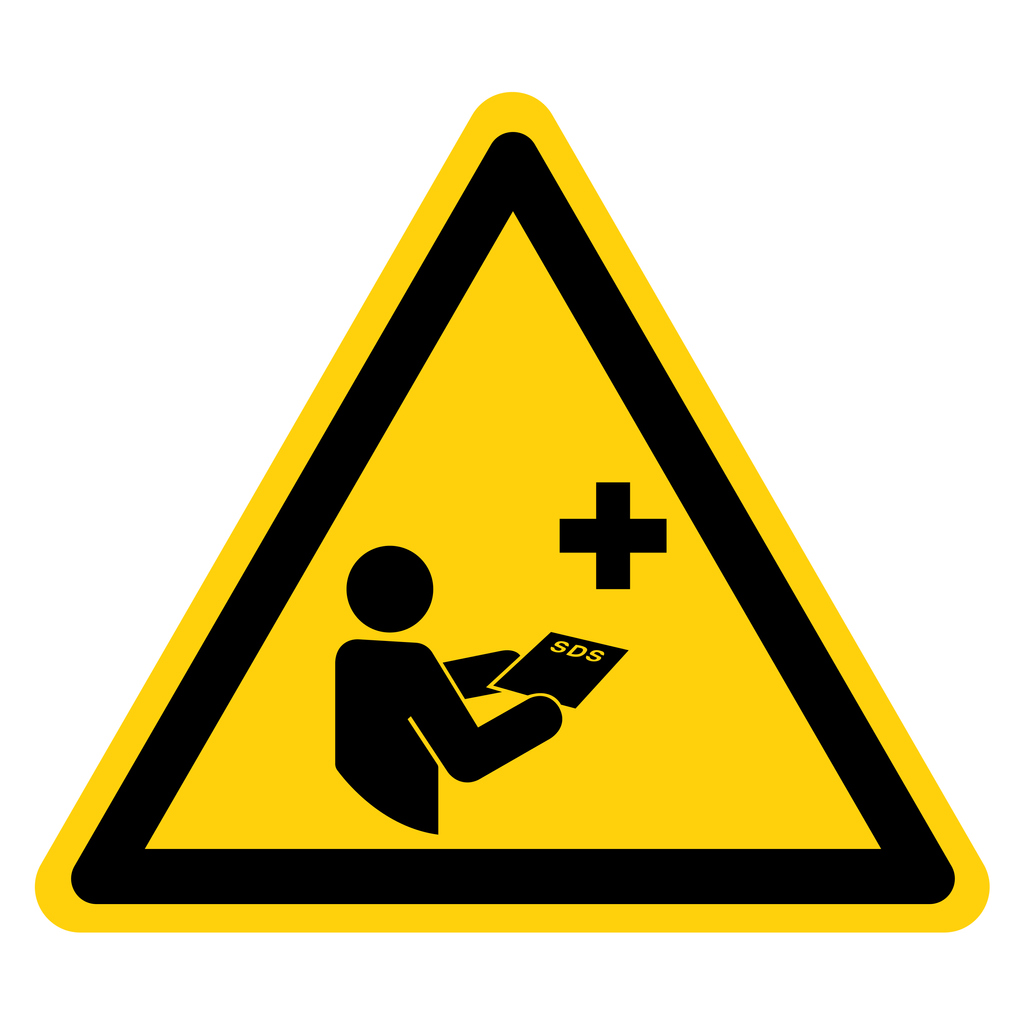
Disposal considerations
Section 13 contains information on correct disposal, recycling, or reclamation of the chemical(s) or its container, and safe handling. This section should also direct the reader to Section 8, Exposure Controls/Personal Protection, in order to reduce exposure.
Transport Information
Section 14 offers categorization information for hazardous chemical(s) shipment and transportation by road, air, rail, or sea.
Regularity Information
Section 15 points out the specific safety, health, and environmental limitations not included elsewhere on the safety data sheet SDS. Any information about the chemical or mixtures’ national and/or regional regulatory requirements.
Safety Data Sheet Other Information
Section 16 indicates the date and/or revision of the Safety Data Sheet. The SDS may indicate where the previous version was modified. People might want to inquire about the modifications with the supplier. Section 16 may also provide other valuable information.
Chemical users have a responsibility to take precautions to safeguard both individuals and the environment from any risks linked with the substances. As a consequence, it is essential to evaluate and use the information included in the safety data sheet when developing a chemical risk assessment for the workplace. All workers must be informed about workplace chemicals, and the SDS is a great way to convey those risks and steps that must be followed while handling them.

